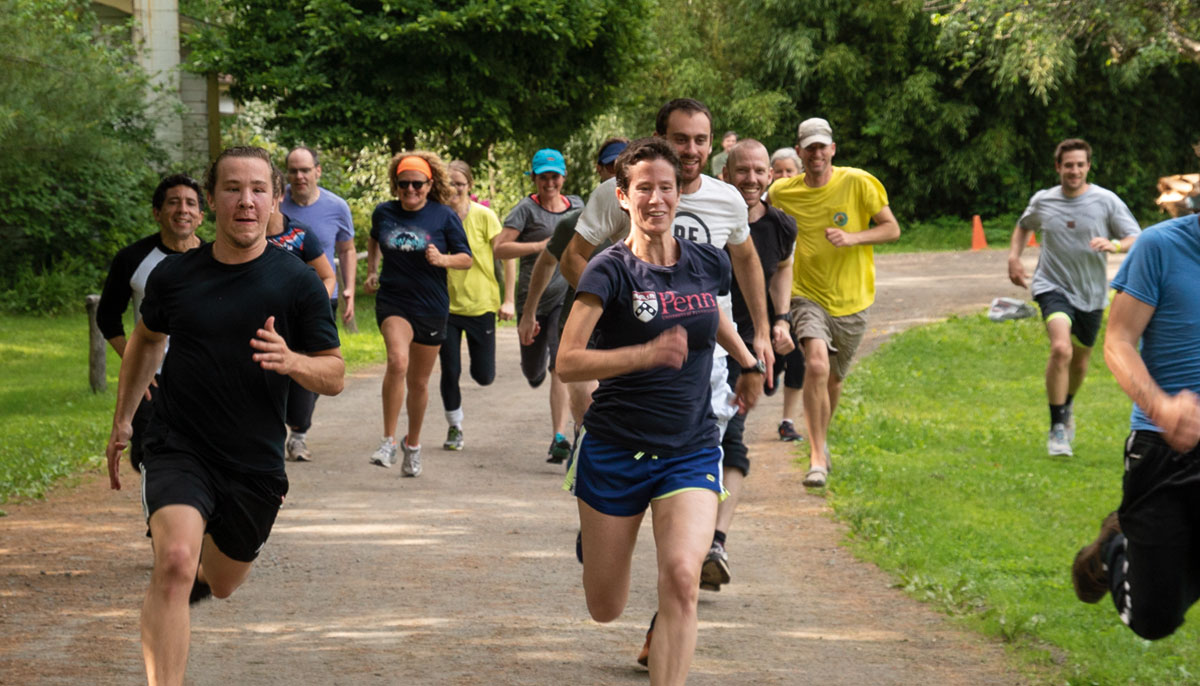Ever since I can remember, I’ve battled a deep and insistent melancholy—an undercurrent of sorrow that seems almost intrinsic to who I am. Growing up I countered this sadness with a lot of effort, a lot of doing. I was always pushing—pushing to be the first, to be the best, to do and be more, always more, and the rush I got from this constant striving and achieving mostly kept my moods at bay. Then I encountered Zen practice and found a welcome refuge in zazen. While sitting still I realized there was nothing I needed to prove, no imagined fault I needed to fix. But in my everyday life it wasn’t always easy to remember what on my cushion seemed so self-evident. So over the years and with the help of zazen, I developed another practice that has consistently seen me through my roughest patches, and that’s “still running.”
When my mother died, it was running that helped me to ride the waves of my grief. I was twenty years old and had only been sitting for a few months, but I’d been running for ten years and intuitively knew I could use breath and rhythm to move the most overpowering feelings through my body. Years later, my brother died of an overdose. By then I’d learned how to move into stillness—to use my mind, my breath, and my body to gently hold the pain until I could release it or until it faded of its own accord, having exhausted its energy.
I sensed that one way to counter my sadness was to run with and through it.
But even at other times, when my pain was simply the ache of everyday living, running still provided me with a balm. Long before I’d learned of endorphins or opiate receptors, years before I’d heard of “the zone,” I sensed that one way to counter my sadness was to run with and through it. Over time I came to see there’s two main kinds of pain: pain we must understand and pain we can only bear. So when sitting with my feelings became too difficult, running with them helped me to feel without fixing, to let what was there be there without judgment or suppression.
To this day, running continues to be a very simple and reliable source of joy for me. Joy at being able to inhabit and use this body. Joy at the wonder of breath and movement and the mystery that is this life.
That’s why during this time, which has been marked by so much loss, so much change and uncertainty, I’m once again turning to stillness and movement to find ease and stability. Every day I sit for a while, then I lace my shoes and go out, not to avoid or run away from the real challenges that we’re all facing, nor because I hold any illusions that running will change the world. I run for a much more humble but irrefutable reason: at its best, running changes me. It helps me move past the constricted view that melancholy brings and it allows me to see that there’s always, always a much wider—in fact, unlimited—range of possibilities.
How to Practice Still Running
Just as breath is the core of seated meditation, it’s also the basis of a strong moving meditation. When you go out for your next run, try the following guidelines and use your breath as the fulcrum for still running.
1. Begin by running at a pace that you can maintain with full attention for the duration of your run. In the beginning, you may need to run slower than you’re used to so you can sustain a rhythm that will allow you to stay relaxed and focused.
2. Place your attention on your hara—a spot about three finger-widths below the navel—and imagine this as the ground or “seat” of your breath. Feel the inhalation and exhalation moving in and out of your body in time with the rise and fall of your abdomen, and keep your attention anchored on this point. If you get distracted, work with your thoughts the same way you do in seated zazen: see them, let them go, and return to your breath. Let every cell in your body, every thought of your mind, be nothing but breath.
3. Next match your breath to your stride, experimenting with different breathing patterns. First, try inhaling for three steps and exhaling for four in a 3:4 pattern. If you’re running faster, try a 2:3 pattern, placing your attention on the exhalation and letting the inhalation happen by itself. Notice the difference in your body and mind when you lengthen the exhalation, or when you allow it to be the same as the inhalation (a 3:3 or 4:4 pattern). I find that letting the exhalation be slightly longer quiets down my thoughts and settles my body.
4. Keep your mouth closed and breathe through your nose as you run, or inhale through the nose and exhale through the mouth. Be careful not to hold your breath or let the exhale get too long before you inhale again. If you start gasping, slow down a bit. Walk if you have to. Just stay connected with your breath and your hara as you move. Continue running at a steady pace, letting your breath flow as you feel your body moving through space.
5. Allow yourself to be fully present to your thoughts, your feelings, and the act of running. Many people spend their running time wishing that it was over; few are actually present as it’s happening. I think this is a disservice to you and to running. So, as my first teacher, Daido Roshi, used to say, “Do what you’re doing as you’re doing it.” Forget about what happened before or what comes next. If you can do this, you’ll be making room for joy to naturally arise—the joy of being fully in your life as you’re living it.

